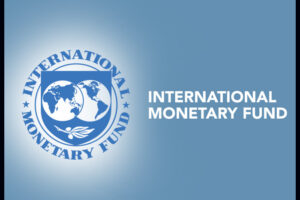IMF Trims Global Growth Forecast, Warns Of Fragility

The International Monetary Fund slightly lowered the global growth forecast for this year and expects inflation to slow more slowly than anticipated earlier as the lender warned that the economic situation is fragile, citing the recent financial sector turmoil.
The world economy is set to grow 2.8 percent this year after expanding 3.4 percent last year, the IMF said in the latest World Economic Outlook report released Tuesday. In the January edition, the projection for this year was 2.9 percent.
Global growth is forecast to rise to 3.0 percent next year, which was slightly less than the 3.1 percent predicted in January.
“Despite the fillips from lower food and energy prices and improved supply-chain functioning, risks are firmly to the downside with the increased uncertainty from the recent financial sector turmoil,” the IMF said.
The risks of hard landing have risen sharply, the IMF said.
The WEO also presented a plausible alternative scenario with further financial sector stress under which global growth declines to about 2.5 percent in 2023.
That will be the weakest growth since the global downturn of 2001, barring the initial COVID-19 crisis in 2020 and during the global financial crisis in 2009–with advanced economy growth falling below 1 percent.
The “anemic outlook” reflects the tight policy stances needed to bring down inflation, the fallout from the recent deterioration in financial conditions, the ongoing war in Ukraine, and growing geoeconomic fragmentation, the IMF said.
“Below the surface, however, turbulence is building, and the situation is quite fragile, as the recent bout of banking instability reminded us,” IMF Economics Counsellor Pierre-Olivier Gourinchas said.
Inflation is projected to slow to 7.0 percent this year from 8.7 percent last year due to lower commodity prices. The figure is expected to ease further to 4.9 percent next year.
Core inflation, which excludes energy and food, has not yet peaked in many countries, the IMF said. The lender raised the forecast forecast for the measure by 0.6 percentage points to 5.1 percent for this year.
The IMF’s inflation projections are well above the targets of most central banks who have been tightening policy aggressively to battle runaway inflation.
Inflation’s return to target is unlikely before 2025 in most cases, the IMF said.
Recent upward revisions in output and inflation estimates in many economies suggest stronger-than-expected demand, the IMF said. This may require monetary policy to tighten further or to stay tighter for longer, the lender added.
The latest slowdown is forecast to be led by advanced economies, mainly the euro area and the United Kingdom. Growth in these economies is projected to drop to 0.7 percent and -0.4 percent, respectively, this year, before rebounding to 1.8 percent and 2.0 percent next year.
Regarding the recent banking sector turmoil, the IMF said quick and strong action by authorities helped to contain the spread of the crisis so far.
“Yet the financial system may well be tested again,” Gourinchas warned.
A sharp tightening of global financial conditions—a so-called ‘risk-off’ event—could have a dramatic impact on credit conditions and public finances, especially in emerging market and developing economies, the IMF economist said.
That would trigger large capital outflows, a sudden increase in risk premia, a dollar appreciation in a rush to safety, and major declines in global activity amid lower confidence, household spending and investment.
In such a severe downside scenario, the IMF projects global growth could slow to 1 percent this year, implying near stagnant income per capita.
“We estimate the probability of such an outcome at about 15 percent,” Gourinchas said.
The IMF projections also revealed an overall slowdown in medium-term growth forecasts with the five-year ahead growth projections falling steadily from 4.6 percent in 2011 to 3 percent in 2023.
Source: Read Full Article
